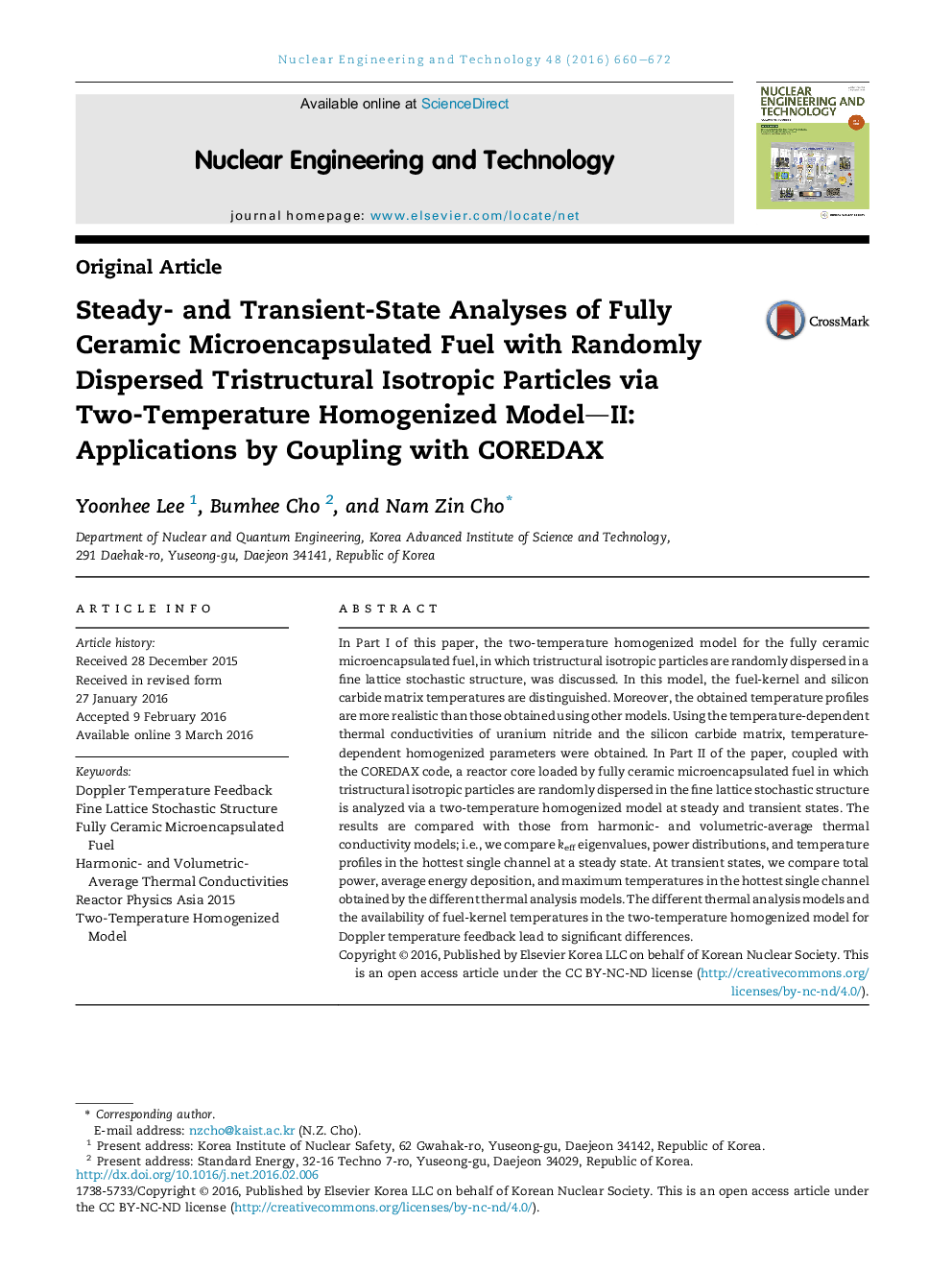| Article ID | Journal | Published Year | Pages | File Type |
|---|---|---|---|---|
| 1739857 | Nuclear Engineering and Technology | 2016 | 13 Pages |
In Part I of this paper, the two-temperature homogenized model for the fully ceramic microencapsulated fuel, in which tristructural isotropic particles are randomly dispersed in a fine lattice stochastic structure, was discussed. In this model, the fuel-kernel and silicon carbide matrix temperatures are distinguished. Moreover, the obtained temperature profiles are more realistic than those obtained using other models. Using the temperature-dependent thermal conductivities of uranium nitride and the silicon carbide matrix, temperature-dependent homogenized parameters were obtained. In Part II of the paper, coupled with the COREDAX code, a reactor core loaded by fully ceramic microencapsulated fuel in which tristructural isotropic particles are randomly dispersed in the fine lattice stochastic structure is analyzed via a two-temperature homogenized model at steady and transient states. The results are compared with those from harmonic- and volumetric-average thermal conductivity models; i.e., we compare keff eigenvalues, power distributions, and temperature profiles in the hottest single channel at a steady state. At transient states, we compare total power, average energy deposition, and maximum temperatures in the hottest single channel obtained by the different thermal analysis models. The different thermal analysis models and the availability of fuel-kernel temperatures in the two-temperature homogenized model for Doppler temperature feedback lead to significant differences.
